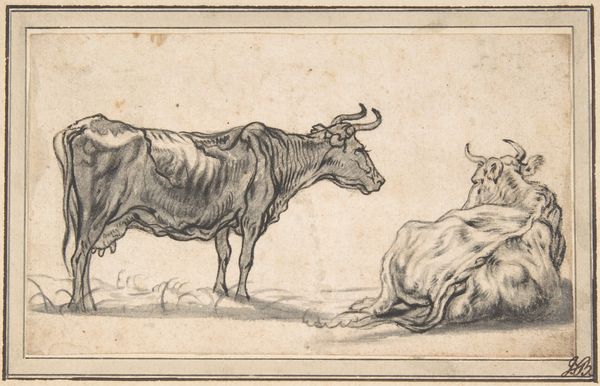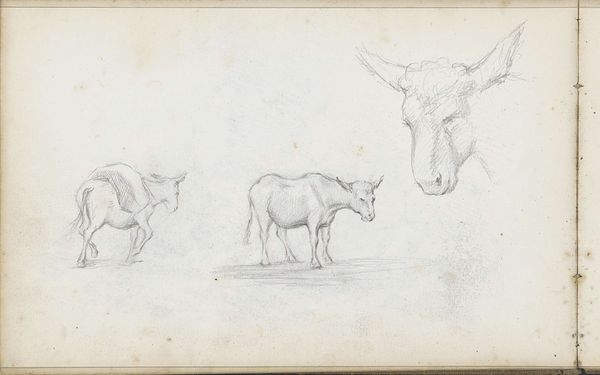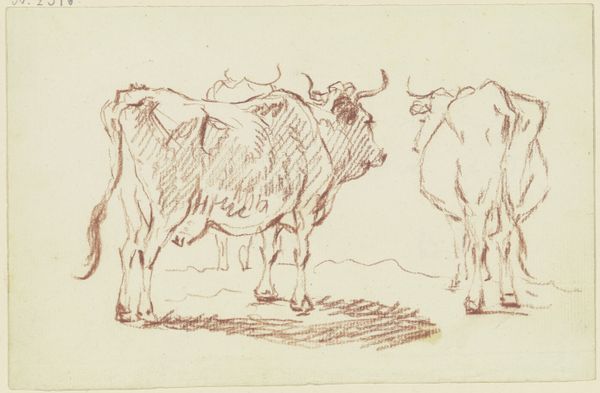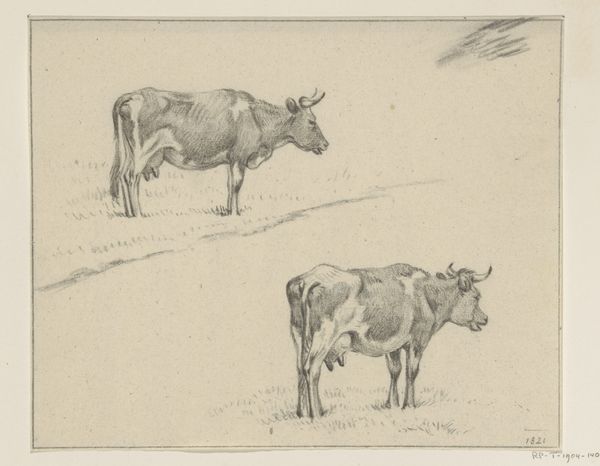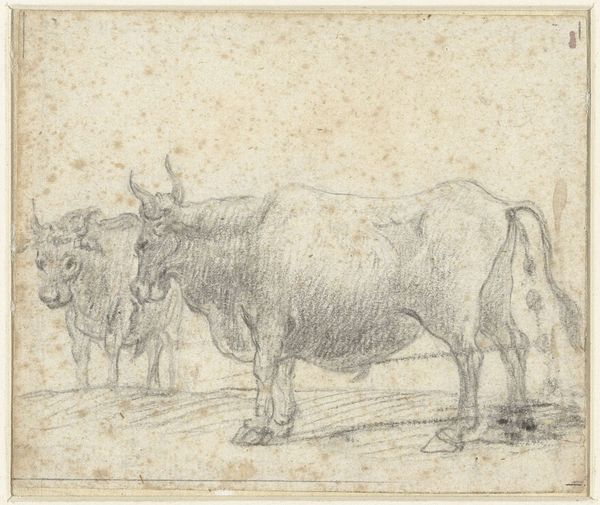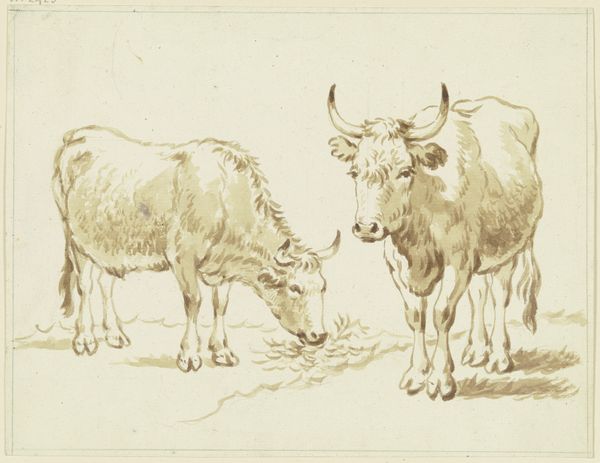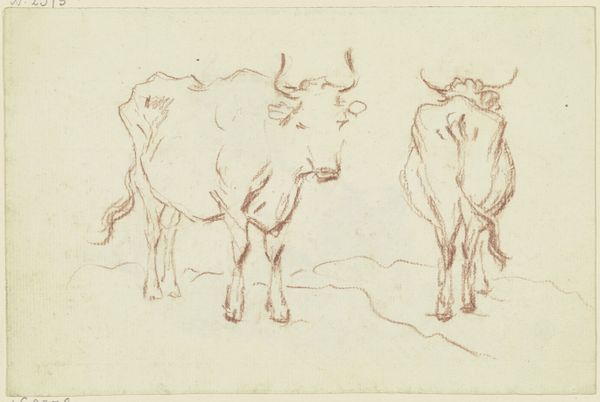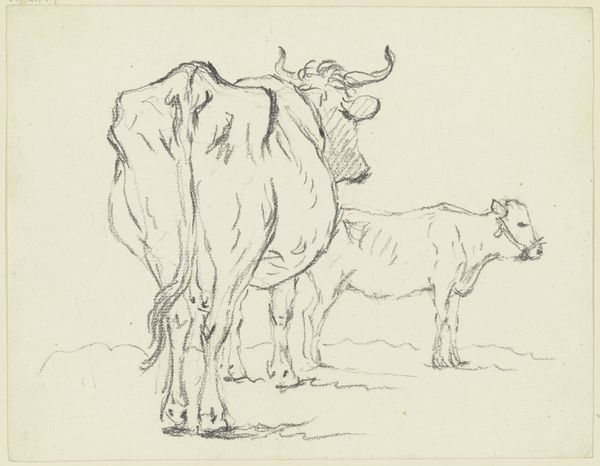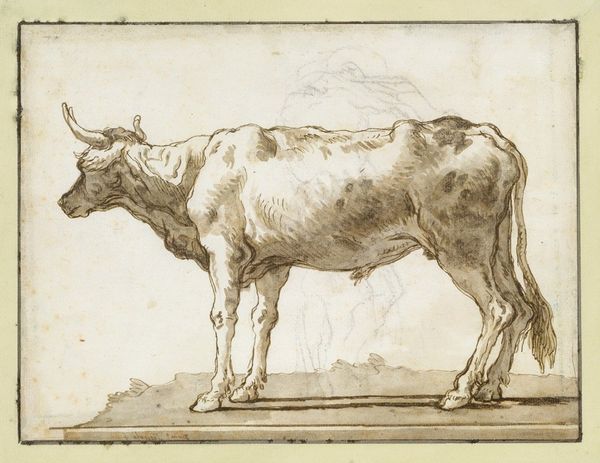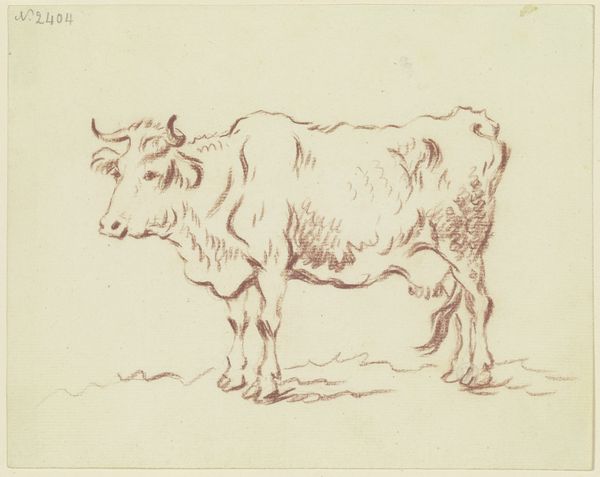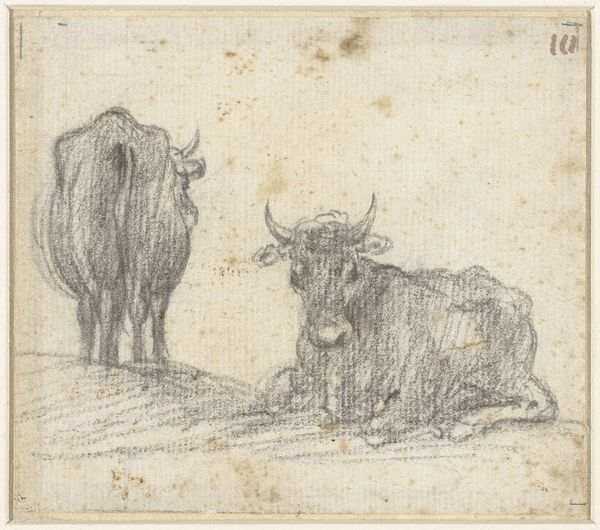
drawing, paper, ink, pencil
#
drawing
#
animal
#
pencil sketch
#
paper
#
ink
#
sketch
#
pencil
#
sketchbook drawing
#
watercolour illustration
#
watercolor
#
realism
Dimensions: height 178 mm, width 148 mm
Copyright: Rijks Museum: Open Domain
Curator: Today we’re looking at a pen and pencil drawing by Mattheus Terwesten, dating from 1696. It's entitled "Trojaanse afvaardiging voor Dido." It's currently housed here at the Rijksmuseum. Editor: Well, my initial impression is one of serenity and pastoral quiet. The composition—the arrangement of these animals, feels deliberately spaced and balanced. Curator: Indeed. It's tempting to view these bovine forms through a symbolic lens, perhaps linking them to broader cultural understandings of strength or fertility. Cattle, across numerous traditions, symbolize wealth and nourishment. Could Terwesten be invoking these connections to convey something deeper? Editor: It's an interesting thought. Looking at the linear qualities— the deliberate yet economical use of line and shadow—it’s as if the drawing prioritizes form over symbolic meaning. The washes of colour feel subordinate to the draftsmanship. How the pencil models mass and volume so efficiently. Curator: But can we ignore the historical context? This wasn't merely an exercise in pure aesthetics. Symbols always seep in, intended or otherwise. Consider how livestock often figured into mythological narratives... Could this selection of animals allude to a specific, even classical narrative? Editor: Perhaps you are right. The arrangement does have a narrative potential. Although if he were referencing antiquity he certainly was not concerned with achieving academic perfection in form. The emphasis is, after all, a rapid almost shorthand assessment of the shapes themselves and how light falls on them. Curator: These swift lines and shadows capture the essence of their animal subjects without needless details. This method speaks to both Terwesten’s keen observation and his mastery of his chosen medium. What stories do you read from the gestures of these animals? Their poses? Editor: They offer only fleeting glances, the cow that rests and watches is serene. Those that stride give us little sign that they go to or from. The ambiguity and its openness is striking. I return to my initial reaction. Pastoral peace and calm prevail in that open meaning. Curator: And with good reason, it remains ambiguous. The charm, as always, lives in those shades of gray. Editor: Yes, the piece manages to distill essential elements to form something quietly contemplative.
Comments
No comments
Be the first to comment and join the conversation on the ultimate creative platform.
